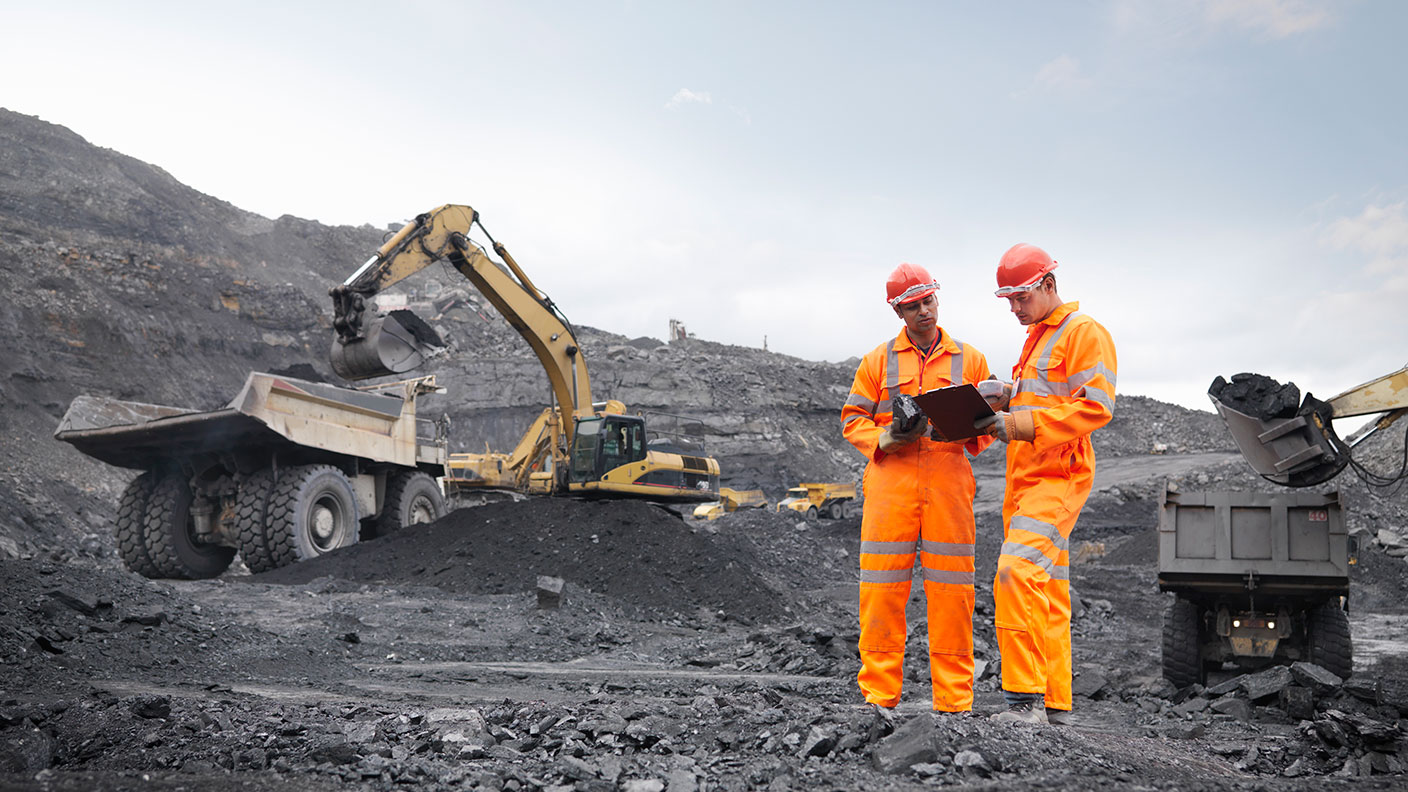These two mining giants are paying out massive dividends
Miners are paying out huge dividends right now, evidence of the capital discipline that has served them well during the current commodities boom. Rupert Hargreaves picks two of his favourite stocks in the sector.


FTSE 100 companies will earn a record £169.7bn in 2022, according to broker AJ Bell. In total, they will return £114bn of this to shareholders.
AJ Bell believes this will be split between dividends (£81.2bn) and buybacks (£32.7bn), although the figures could evolve as the year progresses. As it stands, this will be the second-highest cash return in a single year from FTSE 100 companies.
Rio Tinto (LSE: RIO) is leading the charge. The miner is set to be the FTSE 100’s single biggest dividend payer this year, which shows just how far miners have come since the last commodity cycle.
MoneyWeek
Subscribe to MoneyWeek today and get your first six magazine issues absolutely FREE

Sign up to Money Morning
Don't miss the latest investment and personal finances news, market analysis, plus money-saving tips with our free twice-daily newsletter
Don't miss the latest investment and personal finances news, market analysis, plus money-saving tips with our free twice-daily newsletter
The mining industry has entered a new era of spending discipline
Boom and bust cycles have been a feature of the mining industry since humans first discovered the dirt beneath their feet might be valuable. The rise of the Chinese economy in the mid-90s and early 2000s set off a super cycle, which lasted for the best part of two decades.
The price of iron ore, a key component of steel production, jumped in price from $12.50 per metric ton in mid-1993 to $187 by February 2011, while the price of copper surged nearly 500% over the same period.
Miners rushed headlong into this market, capitalising on crisis-era central bank policies to borrow huge sums of money, with the goal of expanding their output to meet what seemed like neverending demand.
The bubble began to deflate in 2012 and had fully burst by 2015. Iron ore prices dropped 79% from peak to trough and copper fell 55%. The mining industry bore the brunt of the financial fallout from this collapse.
In 2015, analysts at Morgan Stanley estimated that between 2005 and 2014 the sector’s three largest operators, Rio, BHP (LSE: BHP) and Anglo American (LSE: AAL) had spent $246bn on capital projects, and as a result, overloaded the market. Prices crashed as supply surged and the trio lost a combined $48bn between 2011 and 2014.
That’s not a good deal in anyone’s book. Yet after this rude awakening, miners started to get their house in order. They mothballed extravagant “growth-at-any-price” projects and slashed operating costs. Now investors are reaping the benefits.
Shareholder returns are growing as profits surge
No commodity explains the sector’s current position better than copper, which is used in everything from renewable energy projects to pocket calculators.
As miners have tightened their belts over the past seven years, copper supply has dropped. However, demand has continued to increase, creating the perfect environment for producers.
Former Glencore (LSE: GLEN) CEO Ivan Glasenberg told the Qatar Economic Forum in June last year that copper supply needs to double by 2050 to meet projected demand.
As the world’s largest commodity trader, and a significant copper producer, Glencore has its finger on the pulse of the market. If the world can’t hike output to meet this demand (and for the past ten years miners, have only added 50% of the supply required to meet demand) prices will continue to rise. The copper price has already doubled since 2016.
Levitating copper prices helped Glencore report a double-digit percentage increase in profitability last year. Following this “significant improvement” in its financial position, management is returning $4bn to shareholders, split between a $0.26 (20p) per share dividend and $550m buyback.
Antofagasta (LSE: ANTO), which focuses almost exclusively on copper mining in Chile, recorded a 77% increase in EBITDA for 2021 with an average profit margin of 65%. Cash flow from the company’s operations totalled $4.5bn, and it moved from a net debt to a net cash position. Management has declared an overall dividend for the year of $1.43 (110p), giving the stock a dividend yield of 6.5%.
Diversified mining companies become dividend champions as profits surge
Copper producers are raking in the cash, but the real profits are being made by the sector’s biggest players, BHP and Rio.
These companies produce everything from iron ore, to copper, aluminium, coal and rare earth metals. All of these markets are experiencing the same kind of supply and demand imbalance as copper.
These two giants – BHP and Rio – are my favourite plays in the recourse sector. In a volatile, cyclical industry, their diversification is appealing, and they are relatively easy to understand, unlike Glencore, which can be a bit of a black box.
Rio announced record financial results for 2021 allowing it to declare its highest dividend ever of $10.40 (800p) per share, including a $2.47 (190p) special dividend for a total dividend yield of 16.5%. The company ended the year with $1.6bn of net cash.
BHP reported a 69% increase in underlying EBITDA for the first half of its current financial year. Net debt fell to $4.2bn, down from $12bn. BHP announced an interim dividend of $1.50 (115p) per share. The average analyst dividend estimate for the full-year is $4.34 (330p), giving a prospective dividend yield of 11.4%.
These companies have learned the lessons of the past. They are prioritising financial stability and investor returns over growth. Antofagasta, Rio and BHP are all eschewing debt-funded capital growth in favour of funding from internal sources, namly cash flow.
While they remain at the mercy of commodity markets, their current capital discipline bodes well for future growth and cash returns. The double-digit dividend yields may not last if commodity prices start to moderate, but with little debt, these corporations have plenty of financial flexibility to balance investor returns and growth spending.
Get the latest financial news, insights and expert analysis from our award-winning MoneyWeek team, to help you understand what really matters when it comes to your finances.

Rupert is the former deputy digital editor of MoneyWeek. He's an active investor and has always been fascinated by the world of business and investing. His style has been heavily influenced by US investors Warren Buffett and Philip Carret. He is always looking for high-quality growth opportunities trading at a reasonable price, preferring cash generative businesses with strong balance sheets over blue-sky growth stocks.
Rupert has written for many UK and international publications including the Motley Fool, Gurufocus and ValueWalk, aimed at a range of readers; from the first timers to experienced high-net-worth individuals. Rupert has also founded and managed several businesses, including the New York-based hedge fund newsletter, Hidden Value Stocks. He has written over 20 ebooks and appeared as an expert commentator on the BBC World Service.
-
 ‘Why I have ditched my Help to Buy ISA for cash savings and the stock market’
‘Why I have ditched my Help to Buy ISA for cash savings and the stock market’Without the 25% bonus, my Help to Buy ISA is effectively redundant, says MoneyWeek writer Sam Walker.
-
 Is your inheritance tax allowance cut if you sell to downsize or sell your home to pay for care?
Is your inheritance tax allowance cut if you sell to downsize or sell your home to pay for care?Downsizing relief is a little-known benefit that could save your loved ones tens of thousands of pounds in inheritance tax after you’ve died.